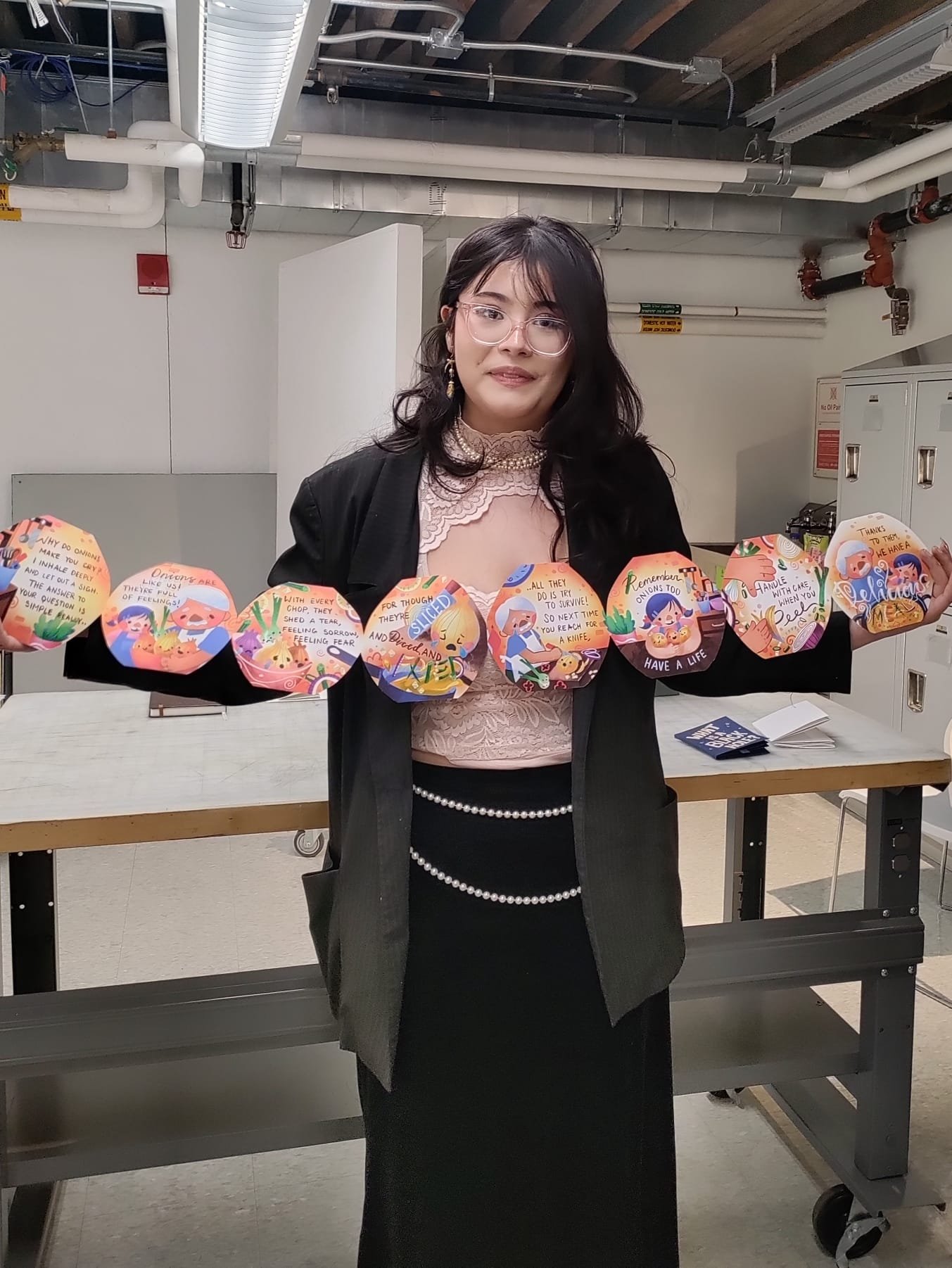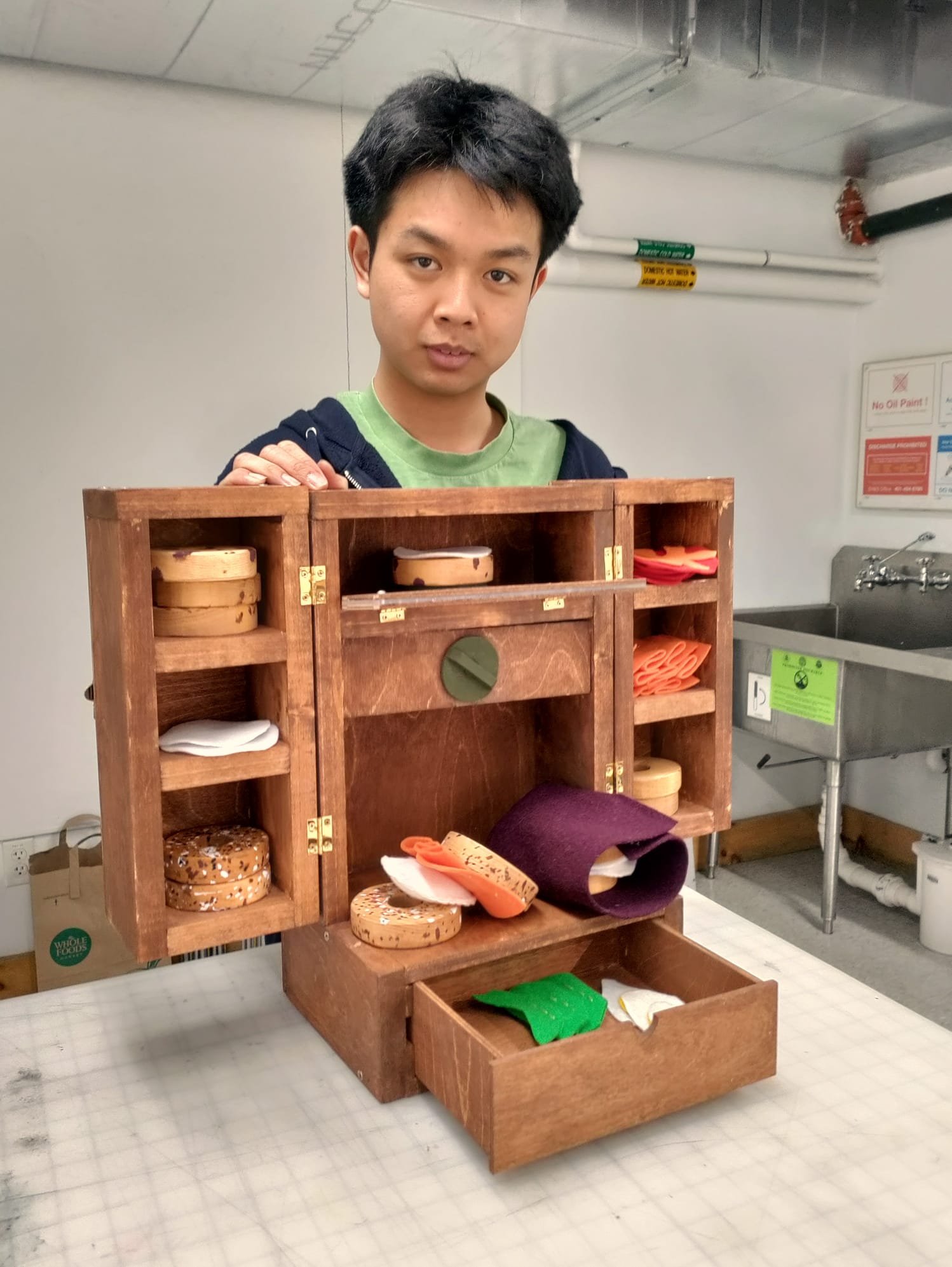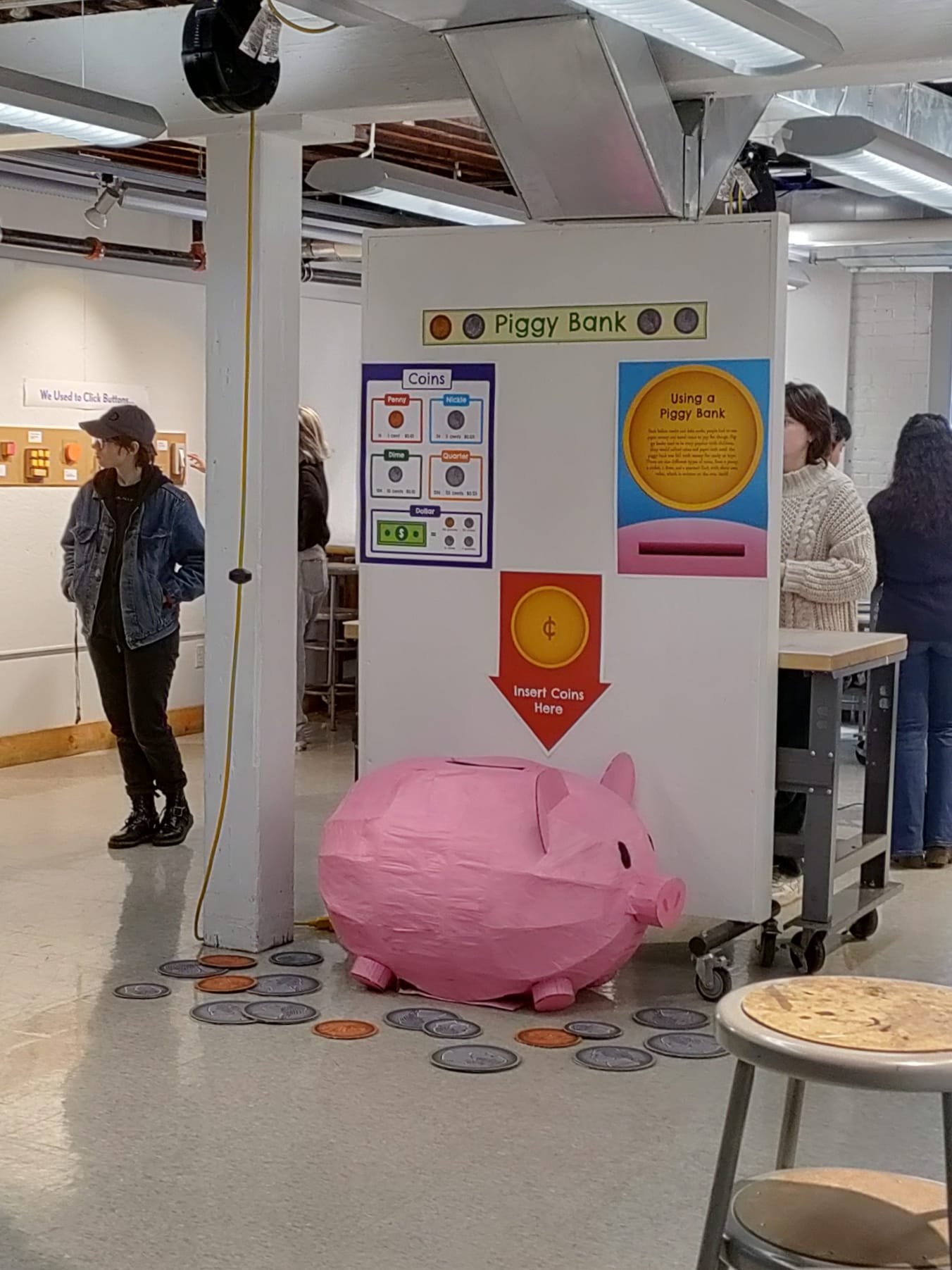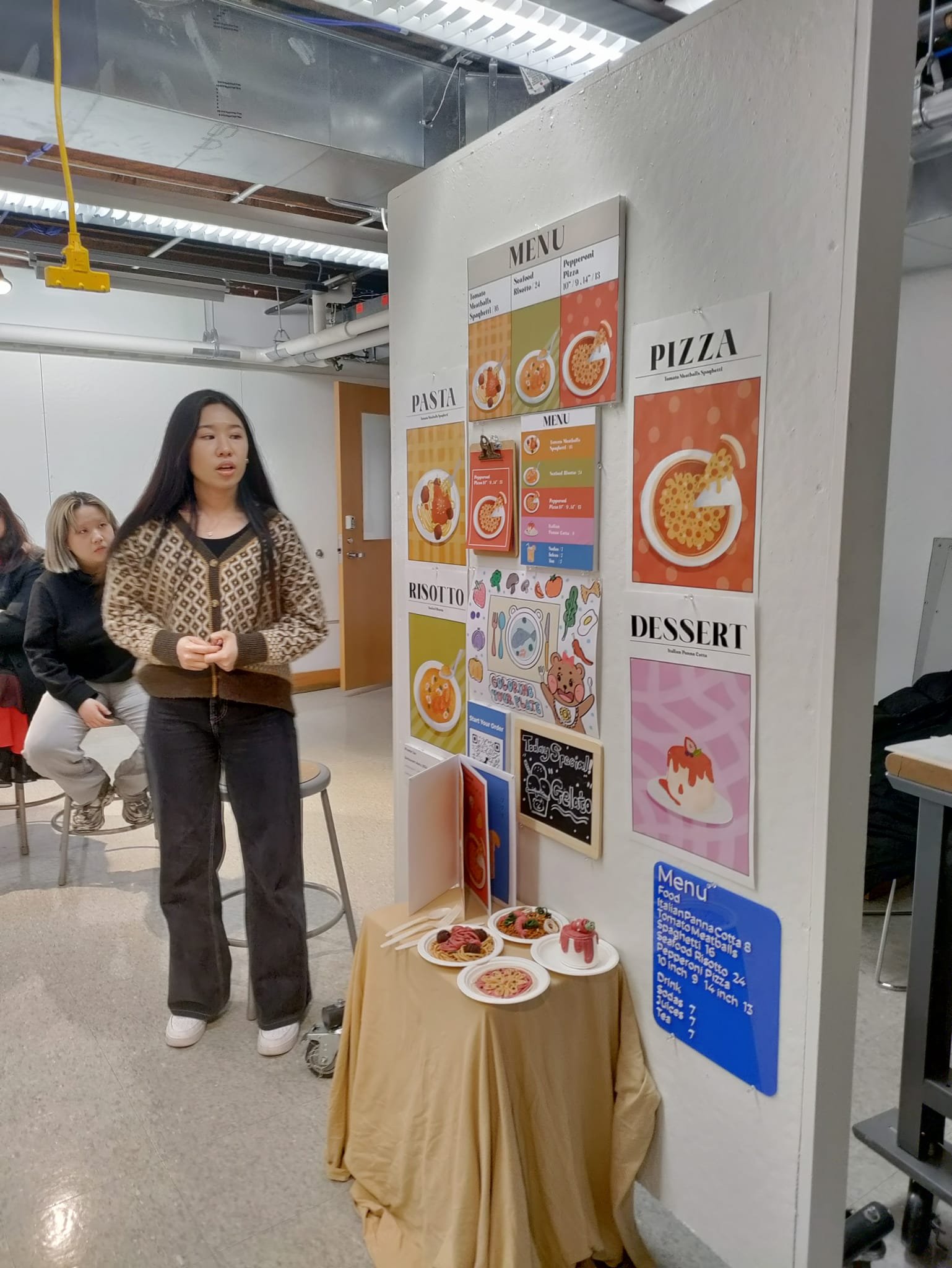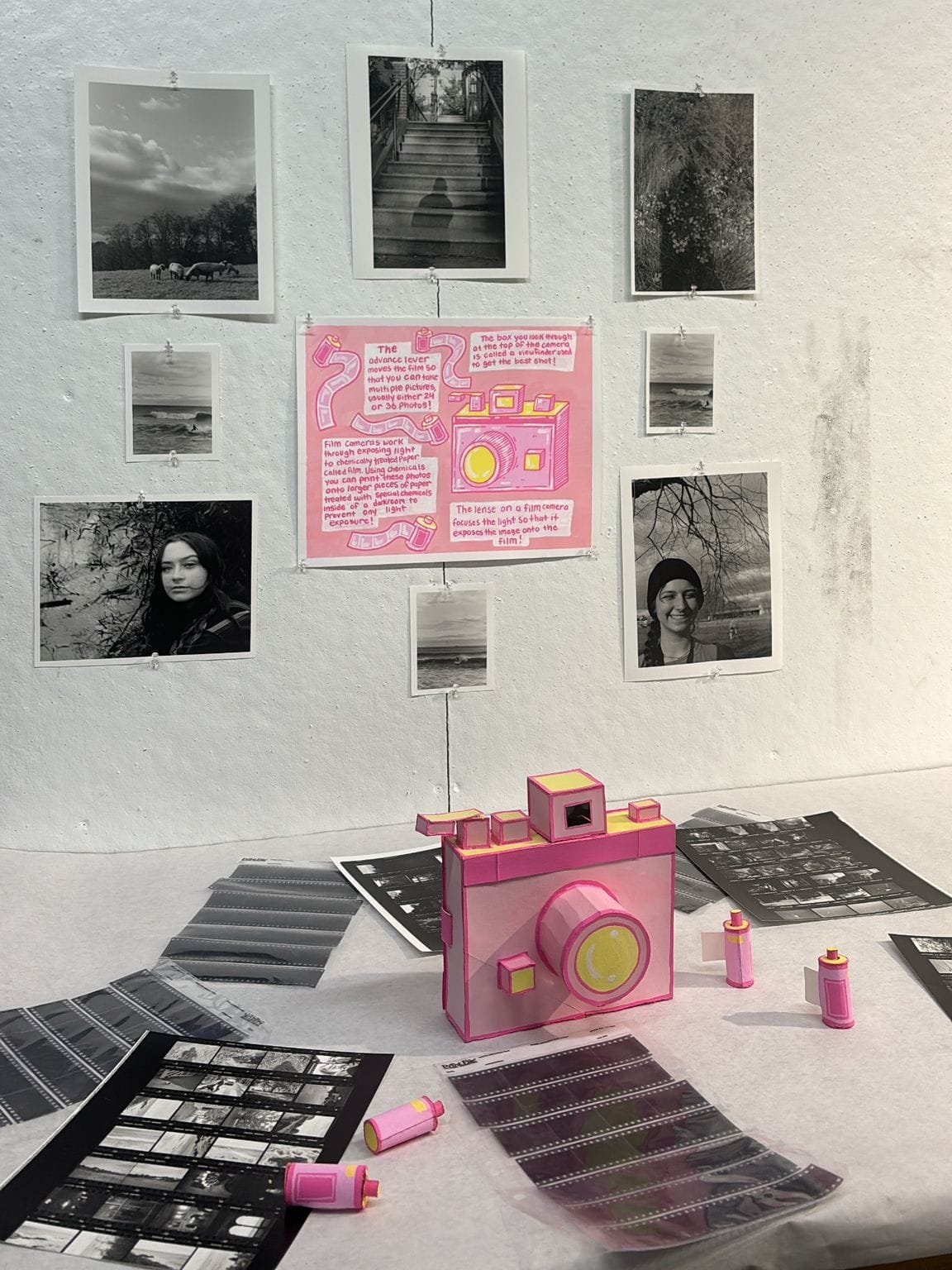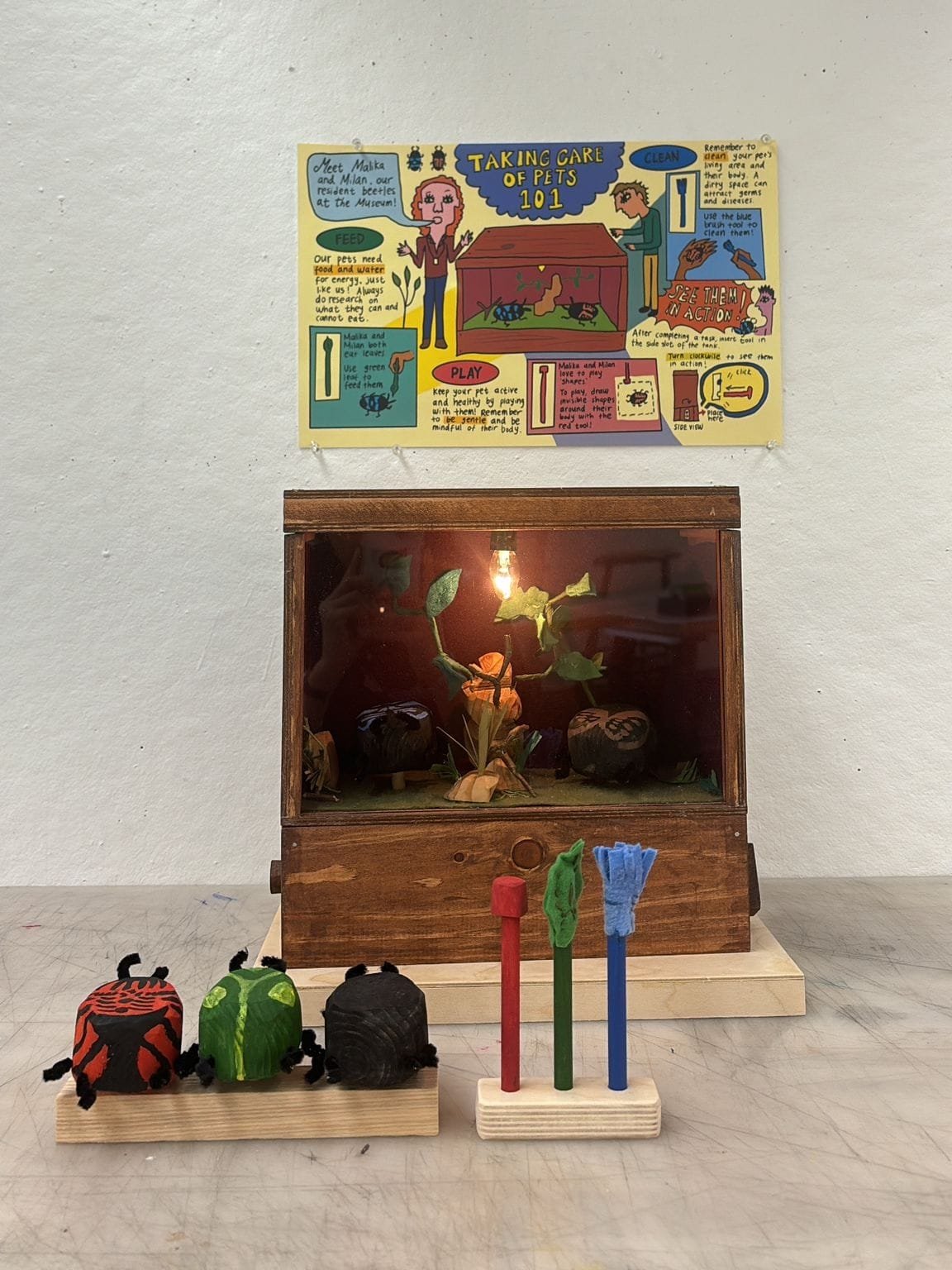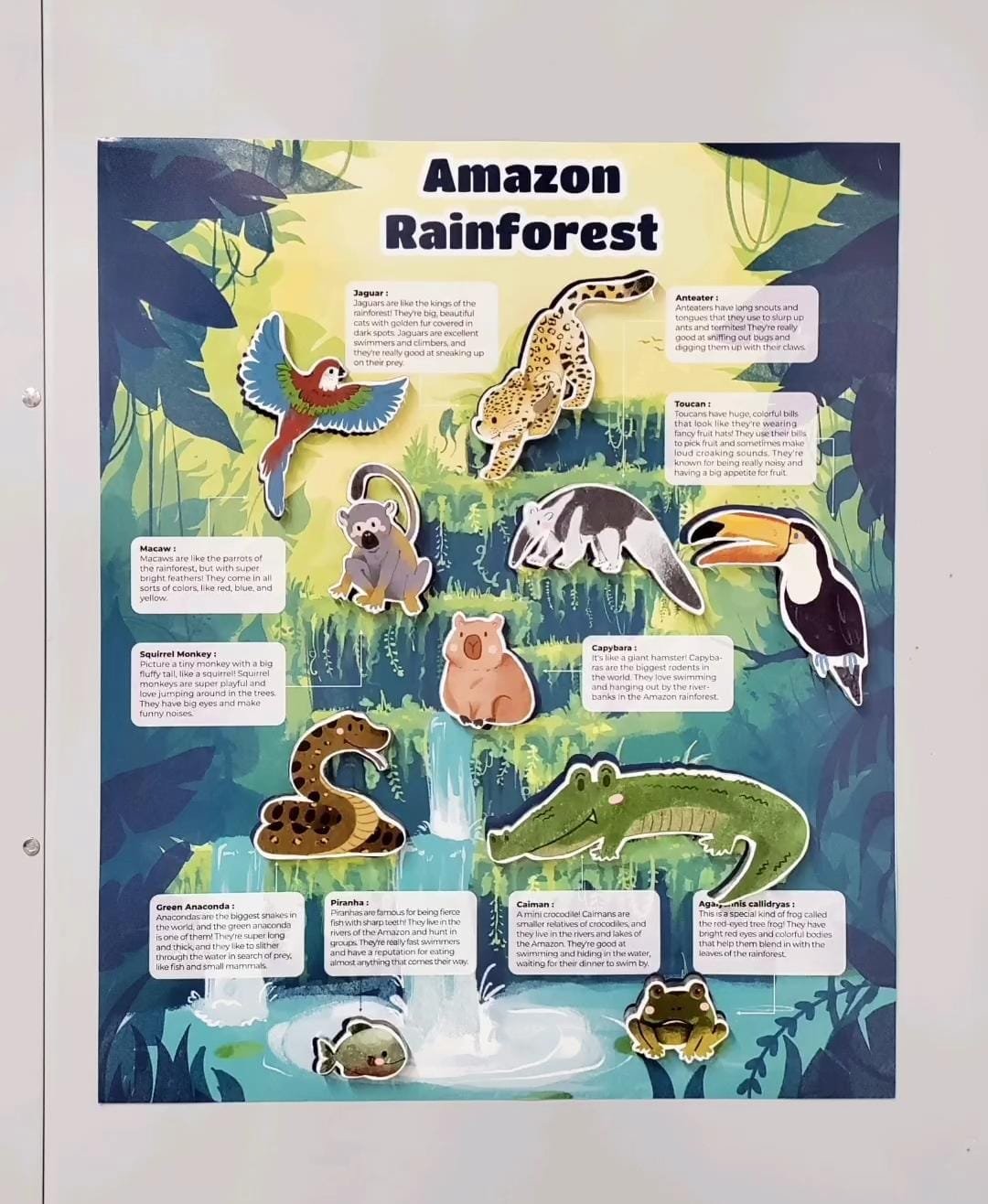Art for Children: Beyond the Book
Rhode Island School of Design
Department of Illustration
Spring 2024 • Undergraduate Course
Note: This course is originally taught at RISD by author and illustrator Kelly Murphy every year. I taught this course during the Spring 2024 semester with a new syllabus developed independently from the original.
Through a combination of creative assignments, readings & screenings, this course exposed students to multiple approaches, theories and perspectives (historical, cultural & disciplinary) on understanding and creating for children. The assignments offered a high degree of formal & thematic flexibility, challenging students to adapt their strategies to different scenarios, ranging from toys/products, information/data, contexts of education, entertainment and more.
01 • TRANSLATING COMPLEXITY
In this assignment, students each picked from a list of "impossible questions" children ask (Where do babies come from? What are black holes? What does god look like? Why do onions make you cry? etc). They then created something that could answer that question, first for a 5-year-old, and then for a 10-year-old. Their objects ran the gamut from the scientific to the whimsical, adopting various metaphors, imagery and interactive elements to aid children in their sense-making of the world.
02 • MAKE-BELIEVE KITS
The second assignment immersed the students in a more commercial context, challenging them to conceptualize and produce their own make-believe kits. Students were encouraged to design not only every aspect of the play experience, but also consider how the various components would come together as a product to be packaged, marketed and sold. Their kits ranged from pretend bagel shops, space discovery, foraging, fairy wands, flower arrangement and more.
03 • THE ‘BACK-IN-MY-DAY’ CHILDREN’S MUSEUM
We’re witnessing a progressive flattening and collapsing of all our physical objects – button phones, books and newspapers are now flattened into sleek flatscreen devices, gas stoves are replaced by induction cooktops, cash registers have collapsed into scannable QR codes. How would one explain a cash-register to a child in whose reality such an object has never existed? In this assignment, students imagined a future in which such objects were all but extinct, and designed their own museum exhibits to explain these objects and concepts to an audience of 4-10 year olds. The assignment culminated in a makeshift “museum opening” set up in the classroom.
04 • MAPPING
Students picked some kind of information/dataset to map and then created a map/infographic aimed at children between the ages of 7-12. The assignment was aimed to make students consider what kinds of information and relationships to highlight, downplay or simplify when catering to a young audience.
05 • HOW-TO POSTER
In this assignment, students picked from a set of challenges to design a how-to poster targeted at a specific age (e.g. “How to brush your teeth” for a 3-year-old, “How to care for your pet fish” for a 6-year-old, “How to tie a tie” for a 13-year-old). The assignment was designed to make students adapt their visual/textual/explanatory strategies based on the specific age they were designing for.
06 • INTERACTIVE STORYTELLING • Semester Project
Storytelling can take countless forms. In this semester-long project, students picked their own topic/theme around which to conceptualize and execute a complex and nuanced narrative object, designed for an age-group of their choosing. The object can take any form as long as it possessed some narrative structure/rhythm, and was mindful about the relationship between content, form & interaction. The students’ projects ranged from illustrated children’s books to interactive artist books to toys, games and learning kits.


